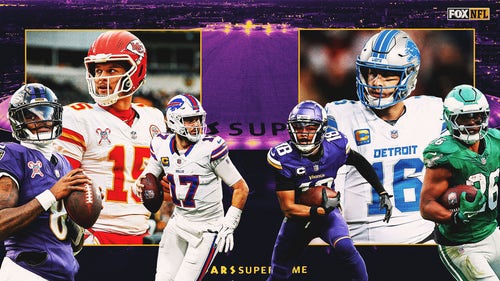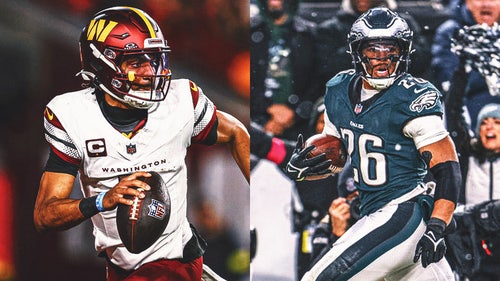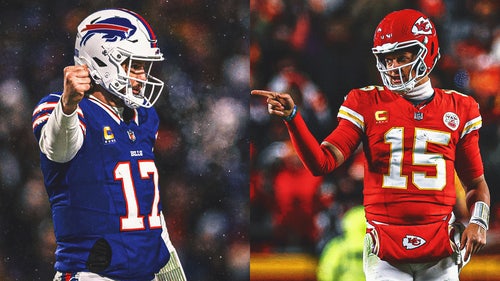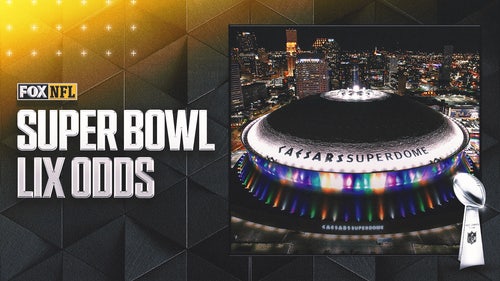
NFL moves up kickoff to 35-yard line
The NFL's kickoff rules are changing but not as radically as once suggested.
Teams voted Tuesday to move kickoffs from the 30- to 35-yard line and prohibit a running head start of more than five yards for members of the coverage team. Touchbacks, though, will still be placed at the 20-yard line rather than the 25 as originally proposed by the NFL's competition committee. Two-man blocking wedges also will be allowed to continue.
The changes in a proposal designed to improve player safety came after suggestions from head coaches at the NFL owners meeting in New Orleans.
"The touchback they felt they wanted to keep at the 20 because they didn't want to over-incentivize the high, shorter kick with the idea of trapping (an opponent) inside the 25," Atlanta Falcons president and NFL competition committee chairman Rich McKay said. "The two-man wedge — and I tend to agree with them because I've watched all the tape on every single kickoff injury — really was not the driving force of (special-teams) injuries. It just wasn't."
The NFL also adopted a proposed instant-replay revision that will allow a booth official to review every scoring play regardless of whether either team has replay challenges remaining.
Plays that did not result in a score — for example, a controversial incompletion in the end zone — are not subject to review under the rules change unless challenged by a coach or occurring in the final two minutes of the first or second halves.
McKay described the change as a "modernization" of the NFL replay system.
The NFL will continue to allow a third replay challenge if a team has successfully used its two allotted challenges. The competition committee had proposed eliminating a third challenge. McKay said the Philadelphia Eagles successfully lobbied to keep the third challenge.
McKay expects the number of touchbacks will rise between five to 15 percent with kickoffs being moved to the 35-yard line for the first time since the 1993 campaign. Last season, 16 percent of all kickoffs went for touchbacks and four percent were classified as "other" (i.e. onsides kick attempts or out-of-bounds kickoffs). The NFL had 23 kickoff returned for touchdowns in 2010, the second-highest total in league history behind the 25 scored in 2007.
McKay said the kickoff rules passed by a 26-6 margin, while the instant replay changes were approved 30-2. All rules proposals need approval from 24 of the NFL's 32 teams.
Buffalo head coach Chan Gailey said Tuesday that the kickoff changes could adversely affect the productivity of his budding kick returner C.J. Spiller. Gailey, though, also supports the reasoning behind the move.
"When you've got a good returner, you'd rather have more returns," said Gailey, a former Denver Broncos special teams coach. "But that's being a little selfish if it's for the good of the game. It's like people who are selfish out in the world. We've got congressmen that vote raises for themselves and we're cutting back everywhere else in America. That's kind of selfish. Yeah, it would be good for me. But if it's better for the league, hey, we'll adjust."
Said Washington Redskins coach Mike Shanahan: "I don’t think anyone wants to change, but it’s about (player) safety."
The NFL's competition committee submitted two other proposals designed to improve player safety. Both were tabled until the May owners meeting in Indianapolis.
One rule would have provided further protection for "defenseless" wide receivers, i.e. those attempting to catch a pass or who have completed a catch and not had time to protect themselves or clearly become a runner. The other change would have further banned illegal "launching" where a defensive player leaves his feet to strike an opponent with his helmet and upper torso.
"There are a number of elements and I think the pushback from the (teams) was, 'Can we separate some of those elements into separate rules and have a little better understanding of them?'" McKay said. "The (other) pushback was that we think there was a sea change in the way the game was played after midseason (in 2010) because of the emphasis by the commissioner's office with respect to fines (for illegal hits). We think the play got better after that.
"Our intent would be to take the proposal, split it up, take the unnecessary roughness part of the rule which involves this new element of launching and create a separate rule for that. ... We knew when we decided to join the whole rule together that it was going to be a six-page rule that was going to look complicated. That was not the intent."
The NFL also voted to insure all playing surfaces must remain grass-colored rather than painted in the fashion of such fields as the blue "Smurf turf" at universities like Boise State.









